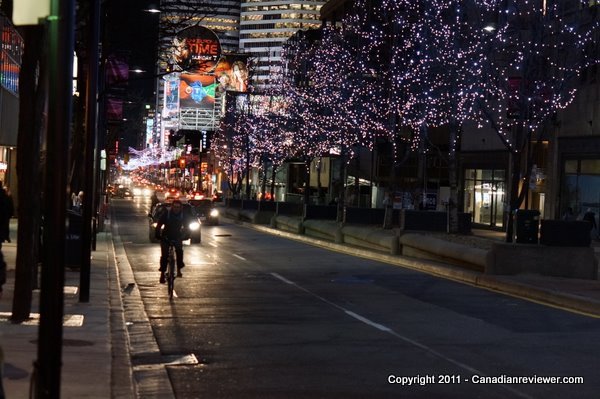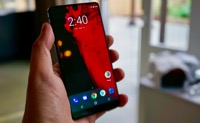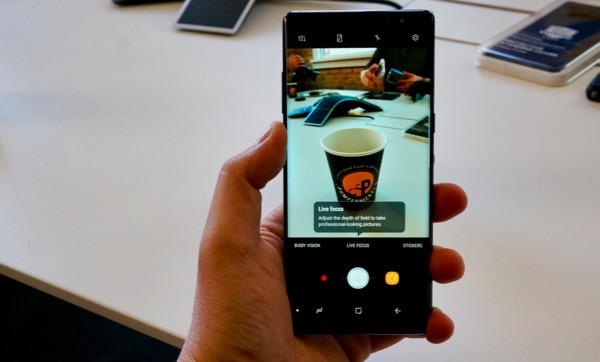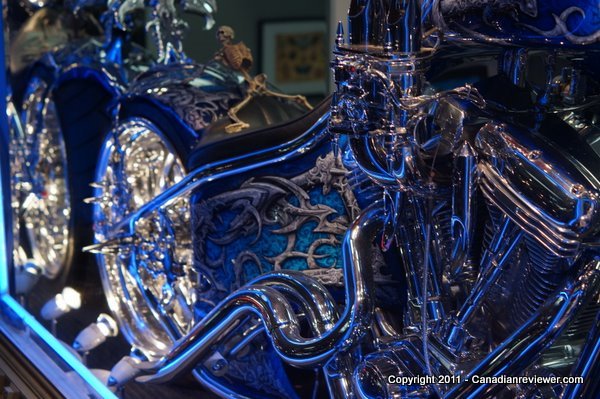Text and photos by Gadjo Cardenas Sevilla
Sony's NEX 7 ($ 1200) is easily the epitome of how far mirrorless interchangeable lens cameras have gone. This is a prosumer-oriented compact APS-C sensor camera that has a 24 megapixel sensor and 2.4M dot OLED electronic viewfinder into its magnesium alloy body and yet still finds room for a pop-up flash and Alpha hot shoe. We spent some time with a pre-production model (the NEX-7 is slated for an early 2012 release, pending production ramp up in flood-stricken Thailand). Here are our impressions of what Popular Photography magazine has chosen as Camera of the Year.
The Sony NEX-7 is the result of Sony's expertise in its Alpha and CyberShot line of cameras as well as all the knowledge, patent stock and innovation that it acquired from two former giants of photography, Konica and Minolta which merged and were eventually absorbed into Sony's camera arm.
The NEX line debuted in 2010 with the NEX 3 and the NEX 5 and has since been expanded to include updated versions, additional lenses (although with the right adaptors, the NEX cameras can take Sony Alpha lenses as well as a variety of manual lenses from older systems). I own and love my NEX 3 camera which was, at the time, the smallest and lightest interchangeable lens camera in the market.
The best features of that mode, which are present in all the NEX cameras are its compact size, tilting screen and ease of use plus the ability to make stunning photos and some of the industry's best in-camera features like the sweep panorama and various fun and colour settings.
The NEX-7 is slightly larger than the NEX 3 and the NEX-5N but adds an electronic viewfinder as well as a good amount of programmable manual controls for a range of situations. The EVF is better than most standalone units that sell for $300 and add bulk to the mirrorless cameras, Sony's expertise in this area is evident in the quality of this EVF.
In terms of handling, the metal NEX-7 is extremely light. Even with some of the smaller lenses, like the 16mm f/2.8 lens or even the kit 18-55mm kit lens, it is easy enough to handle with one hand and can be tucked in a man's jacket pocket with little effort.
The only issue with most of the NEX cameras is that they are so small that using larger lenses can be challenging and look awkward but you do get used to it.
The all metal body, the rubber accents and the well placed controls are easy enough to get used to. The NEX-7 has an easy to use menu with icon driven controls that are some of the easiest we've seen on a mirrorless camera.
Featuring an improved TRI-NAVI system with the addition of two programmable control dials that fall perfectly under ones thumb, a soft button under ones index finger, and a wide range of programmability for the rear panel control wheel, the NEX-7's user interface moves up from its minimalistic predecessors.



We tested the NEX-7 with the 16mm lens as well as the NEX 50mm f/1.8 lens and felt that it was just as good in terms of quality and accuracy as our Canon Rebel T2i and a Canon fast fifty 50mm f/1.8. We tested the camera mostly in low light to dark conditions in a series of street shots and managed to take some very detailed photos.

 The beauty of the APS-C sized processor in the NEX cameras is that it can capture much more information than smaller sensor micro-four thirds and point and shoot cameras. The NEX-7 can manage 10 frames per second stills and also shoots full HD 1080p video at 60 fps which is ideal for videographers looking for cinema-quality video. Low light performance for a camera of this size is superb.
The beauty of the APS-C sized processor in the NEX cameras is that it can capture much more information than smaller sensor micro-four thirds and point and shoot cameras. The NEX-7 can manage 10 frames per second stills and also shoots full HD 1080p video at 60 fps which is ideal for videographers looking for cinema-quality video. Low light performance for a camera of this size is superb.
The video above was shot during an overcast day. There are instances where the screen seems to be re-adjusting, this was when I attempted to shoot a still photo while shooting the video (didn't yield any photos, I might have been doing something wrong). About the video above, that was completely handheld and I was using the 50mm f/1.8 lens.
Certainly DSLRs are still highly regarded and because of the lens systems available to the larger cameras they will continue as the chosen system for professionals but in terms of image sensors, the NEX 7 proves that mirrorless is catching up quickly.
Video performance on the NEX-7 is superb and can seriously be considered for videographers looking to shoot digital video with a combo camera. Again, video is something that Sony has excelled in since the days of Betacam and all their expertise has been distilled into the functionality and quality offered with the NEX-7. We often hear of Canon 7Ds and 5D Mark II's as viable video cameras, well the NEX-7 is right up there. Its only disadvantage, again, might be its slight size.
The NEX-7 will sell for $1200 for the body only which makes it one of the pricier mirrorless cameras in the market.
Is it worth it? That depends. For prosumer or even professional photographers who want a capable second camera that has many of the higher end features of the larger Alpha line of DSLRs, definitely.
We can see wedding photographers, travel photographers and even portrait photographers gravitate towards the NEX-7, which is now complemented by a stunning array of lenses including some from Carl Zeiss. Smaller bodies are less intimidating to the subject and what counts here is the sensor.
24 megapixels is unnecessary for the regular user. We shot at 6 megapixels (the smallest setting for the NEX-7) and still found the file size too big for our needs. For shooters who will make large prints, however, this is extremely useful.
Most consumers and prosumers will probably look towards the Sony NEX 5 or the NEX-5N which are smaller, cheaper but will deliver around 75 percent of the functionality of the NEX-7 and this is more on manual control rather than in picture quality which we found to be consistent within the NEX line.
The NEX-7 is the most impressive mirrorless interchangeable lens camera in the market today. Once the Panasonic GX1 ships early next year, we might have to revisit this even though that camera has a smaller sensor and lower 16 megapixel capacity.
A true object of desire for photographers and the pinnacle of camera technology today, the NEX-7 is simply a game changer and the one device that might entice DLSR users to consider smaller bodies with similar features.
Rating: 5 out of 5